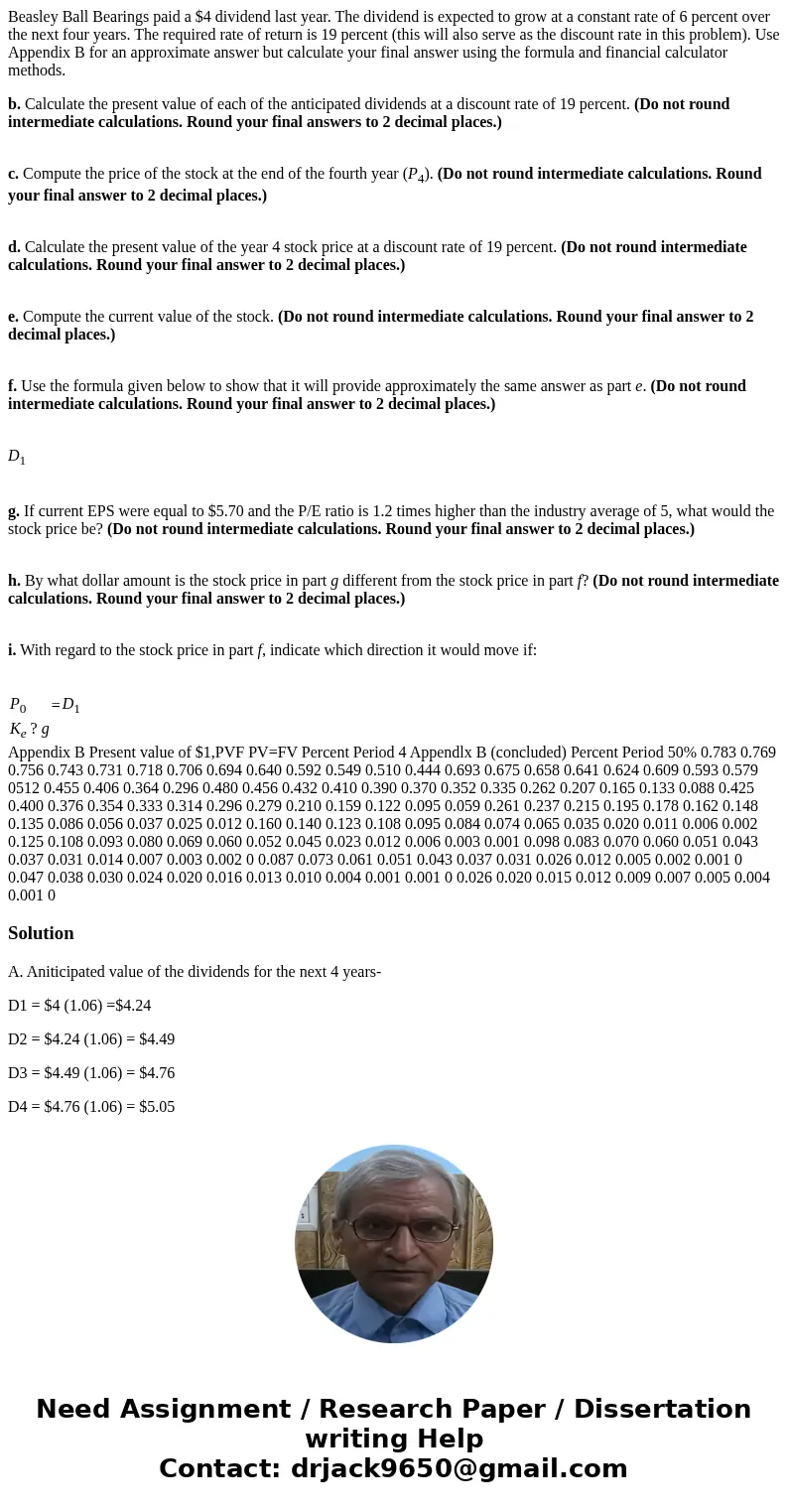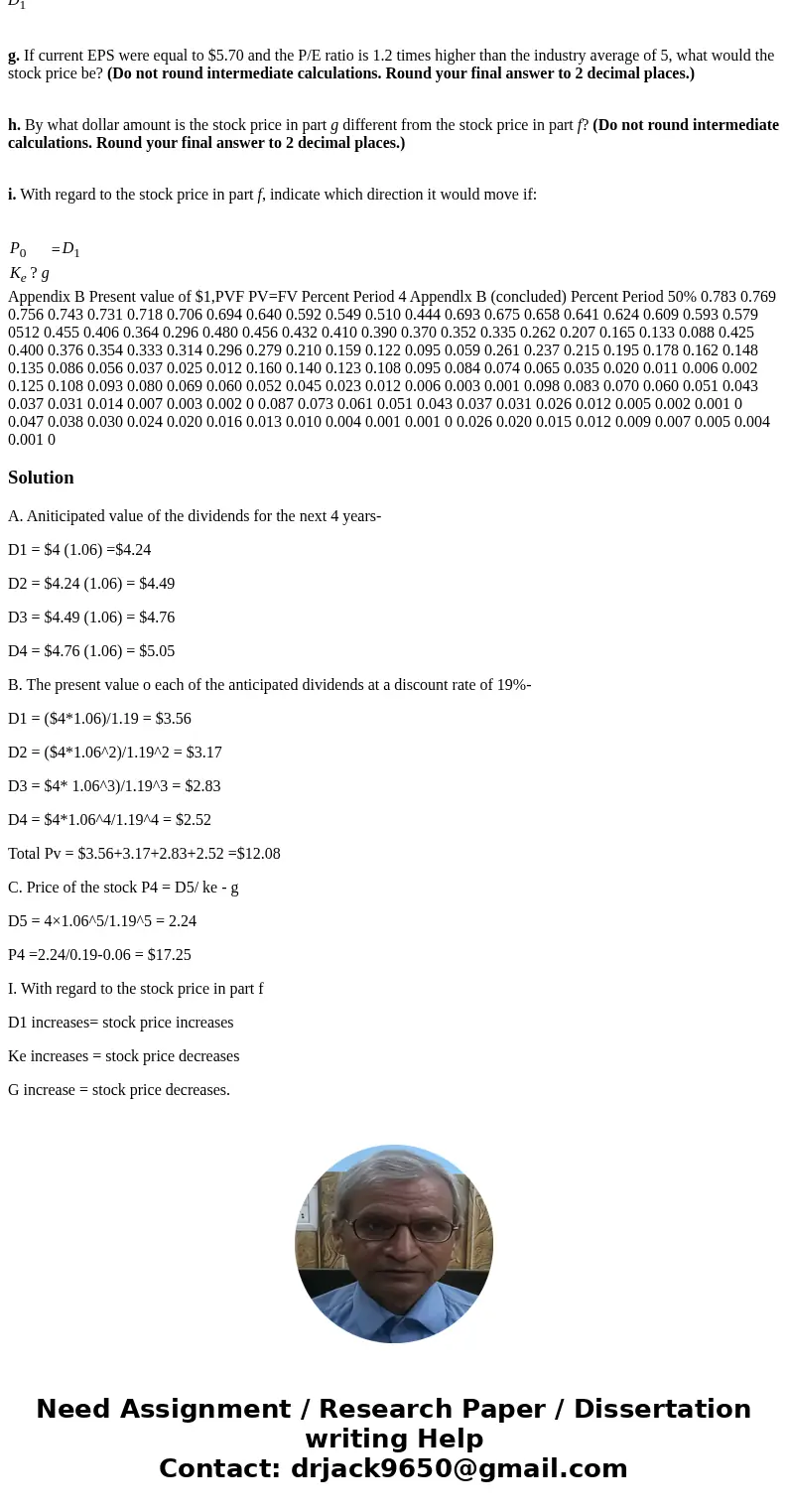Beasley Ball Bearings paid a 4 dividend last year The divide
Beasley Ball Bearings paid a $4 dividend last year. The dividend is expected to grow at a constant rate of 6 percent over the next four years. The required rate of return is 19 percent (this will also serve as the discount rate in this problem). Use Appendix B for an approximate answer but calculate your final answer using the formula and financial calculator methods.
b. Calculate the present value of each of the anticipated dividends at a discount rate of 19 percent. (Do not round intermediate calculations. Round your final answers to 2 decimal places.)
c. Compute the price of the stock at the end of the fourth year (P4). (Do not round intermediate calculations. Round your final answer to 2 decimal places.)
d. Calculate the present value of the year 4 stock price at a discount rate of 19 percent. (Do not round intermediate calculations. Round your final answer to 2 decimal places.)
e. Compute the current value of the stock. (Do not round intermediate calculations. Round your final answer to 2 decimal places.)
f. Use the formula given below to show that it will provide approximately the same answer as part e. (Do not round intermediate calculations. Round your final answer to 2 decimal places.)
D1
g. If current EPS were equal to $5.70 and the P/E ratio is 1.2 times higher than the industry average of 5, what would the stock price be? (Do not round intermediate calculations. Round your final answer to 2 decimal places.)
h. By what dollar amount is the stock price in part g different from the stock price in part f? (Do not round intermediate calculations. Round your final answer to 2 decimal places.)
i. With regard to the stock price in part f, indicate which direction it would move if:
| P0 | = | D1 |
| Ke ? g |
Solution
A. Aniticipated value of the dividends for the next 4 years-
D1 = $4 (1.06) =$4.24
D2 = $4.24 (1.06) = $4.49
D3 = $4.49 (1.06) = $4.76
D4 = $4.76 (1.06) = $5.05
B. The present value o each of the anticipated dividends at a discount rate of 19%-
D1 = ($4*1.06)/1.19 = $3.56
D2 = ($4*1.06^2)/1.19^2 = $3.17
D3 = $4* 1.06^3)/1.19^3 = $2.83
D4 = $4*1.06^4/1.19^4 = $2.52
Total Pv = $3.56+3.17+2.83+2.52 =$12.08
C. Price of the stock P4 = D5/ ke - g
D5 = 4×1.06^5/1.19^5 = 2.24
P4 =2.24/0.19-0.06 = $17.25
I. With regard to the stock price in part f
D1 increases= stock price increases
Ke increases = stock price decreases
G increase = stock price decreases.


 Homework Sourse
Homework Sourse